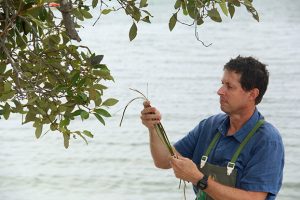New research from Griffith University suggests a love of sharing selfies and holiday snaps could be a boon for theenvironment.
Experts from the Griffith Institute for Tourism (GIFT), the Big Data and Smart Analytics Lab and the AustralianRivers Institute have investigated whether social media platforms could be used by scientists monitoring the health of major ecosystems.
In a research paper published in the Journal of Environmental Management, the researchers used a sample ofalmost 300,000 tweets from the Great Barrier Reef region to test whether tapping into social media could enhanceexisting approaches to citizen science.
The tweets were collected between July 2016 and March 2017 and, using keywords, drilled down to more than 30thousand useful posts.
Researchers were then able to determine where the tweet was posted, whether it contained useful details about theGreat Barrier Reef and whether it had a positive or negative sentiment.
Professor Susanne Becken, Director of GIFT, said tweets can contain a range of useful information, from particularsightings like a whale, to ‘alerts’ such as dead fish or an oil spill.
“Users might also share more personal information, such as their experience or emotions relating to the GreatBarrier Reef,” she said.
“Citizen science or, in this case, social media data is a relatively cheap and abundant source of information.
“Extracting the most useful information for the particular research task is the challenge.”
In this study, dolphins by far attracted the largest proportion of positive tweets when looking at marine life or water.
Analysis suggested tweets about Cairns were also positive, while more tweets classified as ‘neutral’ were recordedin Townsville, Rockhampton, Cooktown and Hamilton Island. Tourists seemed to be most happy with activities suchas sailing and snorkelling, while also demonstrating a concern for dugong populations.
Professor Rod Connolly, of the Australian Rivers Institute, said marine biologists provide high quality scientific datawhere and when they can.
“But analysis of social media potentially will help monitoring much more of something as extensive as the GreatBarrier Reef,” he said.
Director of the Big Data and Smart Analytics lab, Professor Bela Stantic, said this provides a valuable opportunity touse real life problems and data to test their methods and algorithms.
While the use of ‘human sensor data’ is in its infancy, the Griffith University research shows there’s great potentialinto the future, and not just in Australia.
In particular, it could be useful in places where professional monitoring isunaffordable.
Griffith University received funding through the National Environmental Science Program to complete this study.



